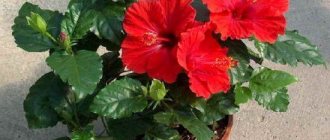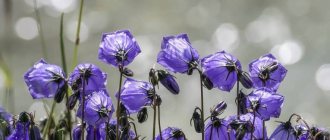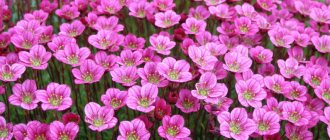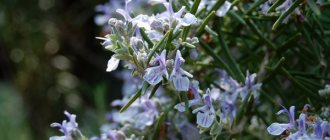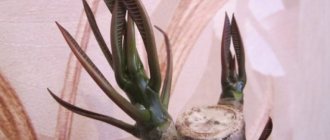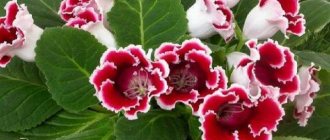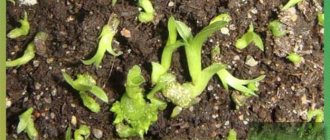Hibiscus is an unpretentious indoor plant. It will delight with its color from early spring until autumn. It is readily grown for room decoration and when creating a winter garden.
But few people know that the hibiscus plant can be not only beautiful, but also useful. Some of its healing properties are written on the tea packaging. These are not all the possibilities of using the plant.
By growing Hibiscus on your windowsill, you will get a beautiful plant and a green home medicine cabinet. The plant's homeland is the tropics, the islands of the Caribbean archipelago, some areas of Eurasia and Africa. There are about 300 species of this plant in total, but not all can be grown at home.
Some types of Hibiscus are used as a food additive in salads and side dishes. Its dried shoots can be found in fruit teas. Basically, it is added to teas such as Hibiscus, Sudanese Rose, Malvacea Tea and other preparations.
Homemade Hibiscus varieties photo
Hibiscus species can be roughly divided according to the requirements for their cultivation into two types: those not suitable for indoor growing and house plants. The last type of Hibiscus has up to 10 varieties, which are not only beautiful, but also useful. Basically only 2 varieties are grown. They are easy to grow on a windowsill. What varieties of homemade Hibiscus are there, see below:
Chinese hibiscus
This type of plant can reach a height of up to 5 meters. If Hibiscus grows in natural conditions. At home, the flower is periodically pruned. It stops growing in height and turns into a beautiful bush. Hibiscus blooms from early spring to late autumn.
The plant has an interesting feature: its flowers last only 2 days, then fall off. New buds appear in their place. Chinese hibiscus is divided into several species, which differ only in the shade and size of the flowers. Caring for Chinese Hibiscus is quite simple. This plant is popularly called “Chinese rose”.
Types of Chinese Hibiscus:
Hibiscus Sanremo
It has dark green leaves and pale white flowers. With proper care, it can bloom from 3 to 5 days;
Hibiscus Tivoli
This type of plant blooms for only 4 days. It has orange-pink flowers. A distinctive feature of this species is the yellow border around the flowers;
Hibiscus Borias
The plant has large lemon-white flowers. The edges of the flowers are corrugated. The flower looks interesting in the living room;
Hibiscus Torino
The flowers of this plant are small in size. The color of the flowers is orange;
Hibiscus Porto
This variety of plant blooms with red flowers. A distinctive feature of the variety is that the flowers are not double, like other types of Hibiscus;
Hibiscus Kyoto Yellow
This hibiscus flower has a yellow flower with a red center.
Chinese Hibiscus varieties, photos illustrate the beauty of each of them. Which type to choose for home cultivation is up to you.
Is it possible to extract it yourself from an adult plant?
Chinese rose flowers form pods that contain the seed. When they ripen, they open and the seeds fall to the ground, from where they germinate. To use planting material for planting in a specific place, you must first collect it:
- The ripening of the pods can be determined by their brown color.
- Before dumping, cover the plant with paper bags. This will prevent the planting material from scattering on the ground after the pods open.
- Open the pods with your hands or a knife, and collect the resulting seeds in a bag. Do not be alarmed if they are of different colors, since they do not mature at the same time.
Selection
After collecting the seeds , they should be sorted to eliminate small, unripe or damaged grains.
Attention! It is best to use seeds with a larger diameter, as they germinate faster and produce strong, healthy shoots.
Syrian hibiscus photo
This flower blooms almost all year round. It has evergreen leaves and flowers of different shades. It can be grown indoors or in the garden. One flower has a diameter of 7 to 12 centimeters. In appearance, Hibiscus flowers resemble mallows. The flower lives only one day.
Syrian Hibiscus can be of several varieties:
Hibiscus Totus Albus
It has snow-white flowers;
Hibiscus Monstrosus
Blooms white flowers all spring and autumn;
Hibiscus William R. Smith
This variety has white flowers with a red center;
Hibiscus Woodbridge
Blooms red with a ruby tint;
Hibiscus Blue Bird
It has blue or purple flowers. The flower may also be blue-violet;
Hibiscus Speciosus
It has double flowers, the shade of each flower is white, and its middle is dark red;
Hibiscus Jeanne d'Arc
Blooms with yellow-white flowers;
Hibiscus Due de Brabant
It has double flowers of a dark red color, they may have white stripes;
Hibiscus Ardens
It has pink and purple flowers.
When choosing a type of Syrian hibiscus, consider your region. Plants with double flowers love warm and mild climates. Such a flower cannot be placed on the balcony in early spring. He will die from low temperature.
Pros and cons of this method
Propagating Chinese roses by seeds has the following advantages:
ease of implementation;- Rose bloom can be seen in the year of planting;
- good seed germination;
- eliminates the transmission of viral infection to offspring.
Minuses:
- it is not possible to obtain a plant with an exact match of the varietal qualities of the “parent”;
- When purchasing planting material, it often turns out to be of poor quality.
You can find out more about how to propagate Chinese roses here.
Hibiscus how to grow full-fledged plants from seeds
The plant reproduces well by seeds. Growing it from seeds is easier than propagating it from cuttings. Cuttings do not always take root and require more attention than seeds. How to grow hibiscus from seeds?
Choose the desired plant variety. You can buy it in “Everything for the Dacha” stores, from grandmothers at the market or at a flower stall. It is convenient to grow plants in a wooden box. You select its size based on the required number of young animals.
A universal mixture for indoor plants is suitable as soil. They pour it into a box and level it. Water the soil thoroughly before sowing the seeds. Seeds are sown in a previously prepared furrow. According to the sowing principle, the process resembles planting carrots in a garden bed.
Seeds should not be deeply covered with soil. Otherwise, the sprouts may not break through the soil cover.
Cover the box with seeds with film or glass and place in a warm place. But don’t forget that it needs to be ventilated regularly. Ideally 1-2 times a day. watering an indoor greenhouse using a plant sprayer, but not from a cup. It's better for the plants.
As soon as the sprouts emerge from the ground, the glass is removed from the box. Now the plants need fresh air. Individual plants that are faster than others in growth are planted in small pots or glasses. Thus, from one box you can get up to 50 new plants. Considering that Hibiscus is easy to care for, it can be successfully sold.
Reproduction by dividing the bush
Bush garden hibiscus can be propagated by dividing the rhizome. Division is not used to propagate tree varieties of the crop, but for herbaceous varieties this is the fastest and easiest method of propagation.
In early spring, before the sap begins to flow, you need to dig up a three- to four-year-old hibiscus bush with a pitchfork, clear its roots from the soil and use a sharp sterile instrument to divide the bush into parts. As a rule, each trunk is a separate plant, and when dividing old bushes, it is permissible to leave 2-3 trunks in each division.
The sections must be treated with ash or coal powder, after which the cuttings are immediately planted in prepared and well-watered pits, which are covered with nutritious soil. The root area is trampled down and watered abundantly, and after two weeks nitrogen fertilizing is applied to the tree trunk circle. With good care, young plants bloom in the first season.
Hibiscus propagation at home by cuttings
Hibiscus can also be propagated by cuttings. If you don't want to wait for the seeds to grow into plants, you can use cuttings. The optimal time for plant propagation is June. Cuttings up to 15 centimeters in length are cut from the plant. They are cleared of leaves and soaked in a special solution to stimulate growth.
The cuttings should lie in this substance for 18 hours. Then a mixture of sand and peat is prepared. It is poured into small pots and cuttings are planted there (1 piece per pot). The planting depth of the plant should not exceed 3 centimeters.
Then a specific frame is prepared from wire and polyethylene. A pot with a cutting is placed under this dome for 3 weeks. The dome provides high humidity inside itself. This promotes root formation.
The temperature in the room where new plants are grown should be no less than 25 degrees. If it is smaller, the cutting will not take root. Plants should be planted in standard-sized pots 3-3.5 weeks after they have taken root. Select a room where there are no drafts. Young plants do not like dry soil. Watering should be regular. But stagnation of water will not bring any benefit.
If you need to grow Hibiscus, propagation at home from cuttings will be the best solution.
Grafting a cutting
For vaccinations to be successful, you should consider:
- use a young Chinese rose plant to graft cuttings;
- graft into the crown of the plant;
- there should not be more than 5 scions on one bush;
- It is recommended to vaccinate in the first summer months.
Grafted plants need to be carefully looked after, provided with a well-lit place and provided with regular feeding.
In winter, grafted hibiscus require additional lighting (about 6 hours per day) so that the grafts do not die off. The use of grafting allows you to obtain several varieties on one plant.
On a note! Is it possible to propagate hibiscus from leaves ? A hibiscus leaf cut and placed in water can produce roots. Planted in the ground it will be green and beautiful in appearance. It is not recommended to use the leaf for propagation: a full-fledged plant will not appear from it.
Hibiscus how to care for a flower at home
Hibiscus is grown in pots at home. If you care for the flower correctly, it will bloom from early spring until autumn. Hibiscus loves a sunny place. But, protect it from direct rays of the sun. Provide a temperature of 20 to 25 degrees.
During the flowering period, the plant is watered regularly. After each watering, loosen the soil in the pot. Hibiscus does not tolerate drafts. It needs to be sprayed every day. This is true in winter, when the air is dried out by heating devices.
Hibiscus flowers begin to form at temperatures of at least 15 degrees Celsius. Why then does the plant not bloom? Many gardeners face this problem. The bottom line is that a temperature of 15 degrees does not dry out the soil. With regular watering, water stagnates in the pot. Do you want the plant to bloom? Water it less if the apartment is 15 degrees Celsius.
There is Hibiscus, how to care for it at home if almost no one is at home? At the optimal temperature, the plant blooms almost without watering. For example, in offices where it is not so warm and plants are often forgotten to be watered, Hibiscus blooms profusely.
In winter, the plant recovers. Watering should be reduced. You cannot move a flower pot from place to place. During the recovery period, it is better not to disturb Hibiscus. They find the coldest place in the apartment for it and leave it until February.
Sometimes the flower is fed with plant fertilizers. In such soil it grows actively and will delight you with flowers for a long time.
Adviсe
Experienced gardeners have learned the following lessons from this story:
- For propagation, you need to take only mature branches, since the green ones are weaker and can simply rot.
- The cut must be treated with a root-forming preparation.
- The room temperature should always be maintained between +17 and +27 degrees.
- The mixture for planting young plants should be nutritious, light and loose.
- To ensure high humidity, it is imperative to make improvised mini-greenhouses.
Cuttings can be carried out year-round, but if this is done in winter, rooting will take longer due to the low activity of vegetative processes. But it is best to grow cuttings in April-May, since this is the most favorable period for this.
Hibiscus beneficial properties and contraindications
The Hibiscus plant is not an ordinary indoor flower. It can be used for cooking and added to tea. What are the beneficial properties and contraindications of Hibiscus?
Useful properties of hibiscus
Hibiscus flowers are actively used for the treatment and prevention of many diseases. These are mainly gastrointestinal diseases, skin diseases, dysentery and hemorrhoids. Hibiscus leaves contain flavonoids. They remove toxins and harmful substances from the body. Eating the leaves and flowers of the plant can activate the body's metabolism. As a result, this will lead to natural weight loss.
Hibiscus should be added to the diet for the prevention and treatment of worms. Decoctions and tea from Hibiscus kill the larvae and eggs of worms and remove them from the body. Hibiscus is used to stimulate bile production and cleanse the liver of harmful substances. It helps increase metabolism.
Hibiscus flowers are used as a diuretic and choleretic agent. They can be used as a remedy against inflammation and seizures. The flowers of the plant can also be used as a means to stop bleeding.
Hibiscus inflorescences contain citric, malic and ascorbic acid. They can be taken by people with kidney problems. Hibiscus tea can be drunk to prevent the formation of kidney stones. You can drink this tea to strengthen your immune system.
During the winter, you will get less flu and will not catch a viral infection. Decoctions and infusions are drunk as a preventative against colds. Fresh hibiscus flowers can be applied to wounds, abscesses and tumors. When crushed, they can be useful in the treatment of malignant tumors.
Boys and girls can use the plant to treat inflammatory processes on the skin and acne. In the form of lotions, flowers are used to prevent and treat eczema and other skin diseases.
Contraindications to the use of hibiscus
In fact, there are not many of them. Hibiscus should not be consumed by people with high stomach acidity. It is not used by those who have problems with the duodenum or stomach ulcers. It is not advisable for pregnant women and nursing mothers to take decoctions. Children under one year old are also prohibited from consuming Hibiscus.
Soil preparation and site selection
Earth.
For sowing seeds and rooting garden hibiscus cuttings, a peat-based substrate is suitable:- a mixture of peat and moss - sphagnum;
a mixture of peat and perlite;
- a mixture of garden soil, peat, coarse sand in equal proportions.
- Place.
The best place for garden hibiscus on the site is partial shade; it does not tolerate direct bright sunlight. But you can’t plant it in absolute shade. Also, the place should be protected from drafts.
To grow hibiscus in open ground, you also need light and permeable soil rich in organic matter. For example, turf, leaf soil, humus, coarse sand in a ratio of 2:2:1:1. Alternatively: 5% perlite, 45% hardwood bark, 50% peat.
Hibiscus tea: beneficial properties and how to prepare
Hibiscus flowers can be used to make delicious tea. It is called differently: “Hibiscus”, “Sudanese rose”, “Kandahar”, “Drink of the Pharaohs”. Tea can be prepared at home or purchased at a pharmacy. Tea contains a substance called anthocyanins. They give the drink a red color. Anthocyanins help strengthen blood vessels and normalize the functioning of the circulatory system.
If you drink hot hibiscus tea, its beneficial properties help solve problems with the nervous system. This drink helps cleanse the liver of harmful substances and removes toxins from the body.
You can drink Hibiscus to increase blood pressure. It is consumed hot. When you need to lower your blood pressure, drink tea cold.
You can make hibiscus tea at home. To do this, you need dried flower petals and boiling water. 2 tablespoons of flowers are poured with 2 cups of boiling water. The decoction must be left to steep for 30 minutes before use.
Do not bring the broth to a boil. At very high temperatures, dyes decompose. The drink becomes dirty gray and its beneficial properties are lost.
Growing Hibiscus at home is not so difficult and profitable. You will not only have a beautiful plant that blooms all year round, but also your own pharmacy on the windowsill.
Leave a review and get a plus for your site karma:
Possible problems during cultivation
- The rooted cuttings wither after transplanting into the ground.
When planting a young plant, its root system was damaged. You will have to cut the hibiscus again, since such a cutting has practically no chance of survival. This phenomenon can be prevented if the cutting is transplanted using the transfer method: remove the plant from the old pot and, without shaking off the earthen lump, place it in an earthen hole. - The plant did not bloom as expected. For systematic and abundant flowering, garden hibiscus needs regular pruning.
- Young garden hibiscus shows signs of infectious diseases (rot, powdery spots, etc.). To prevent this phenomenon, it is recommended to disinfect the soil and the pot in which the cuttings will be planted (fungicide treatment, heat treatment). You can also briefly immerse the seeds in a weak solution of potassium permanganate before soaking them in a growth stimulant solution.
The two methods of reproduction discussed in the article are simple and reliable. Choosing one of them is a matter of taste, desire, and capabilities of the gardener. But in any case, the summer cottage will be decorated with a young, unpretentious, flowering plant.
Plant passport
Swamp hibiscus captivates lovers of indoor plants with its appearance. It is very bright and will decorate your home or office.
Root system
Swamp hibiscus has a fairly powerful and well-developed root system. This is due to the fact that in nature the plant can grow up to 3 m in height with a well-developed crown.
Leaves
The surface of the leaf is glossy, the lower part is pubescent. The leaves are heart-shaped with serrated edges.
Flowers
The flowering period is quite long. It begins in early spring and continues until mid-autumn. The flowers are bright, come in bright red, lilac and violet with carmine spots at the base. The corolla reaches 15 cm in diameter. The flowers bloom for one day, wither and fall off in the evening.
In place of the flowers, a fruit is formed. It is a box with five doors. Inside contains a large number of pubescent brownish seeds. They have a light woody aroma with a hint of wine.
Trunk
The stem is straight, the lower part is woody. The bark is dark brown.
How to propagate
Hibiscus reproduces on its own when the pods in place of the flowers turn brown and begin to fall to the ground. Not all gardeners like this situation, because if this process is not controlled, next year the entire garden will end up in young hibiscus bushes, and its intended pattern will be disrupted. However, if you just want to collect seeds for further propagation of the plant, do not destroy several dry flower heads, wait until the pods appear and their surface darkens. You can also propagate hibiscus through cuttings, taking several young shoots from it in the spring and rooting them into the ground.
Hibiscus disease control
Hibiscus is highly resistant to disease. Moreover, if he is provided with proper care. Some gardener mistakes in planting can significantly harm the plant:
- curled leaves and weak flowering or its complete absence indicate a lack of nutrients and watering;
- if the plant dries out and turns yellow, this indicates chlorosis. In this case, spraying with iron chelate will help;
- Hibiscus does not tolerate lime in the soil; planting in such an area will destroy the plant.
The flower can be bothered by parasites such as aphids and mites. To combat them, spraying with insecticides is used.
As you can see, swamp hibiscus does not require much attention. A suitable site, simple fertilizing and proper watering are the few things it needs for normal development and long flowering.
The benefits of hibiscus and use in cooking and traditional medicine
Residents of countries where hibiscus traditionally grows use all parts of the plant for food - flowers, ovaries, stems, leaves and roots. In European culture, tea made from petals is known - hibiscus, a tonic vitamin drink. Fried and ground leaves are added to soups and salads, they give dishes a aroma reminiscent of sesame.
The components that form the chemical composition of hibiscus are beneficial to human health:
- replenish the need for vitamin C, increase immunity
- stimulate metabolism, improve the functioning of the excretory system, help cleanse the body
- have antioxidant, antispasmodic, laxative, antiparasitic effects
- help with insomnia and alcohol poisoning
- increase appetite and promote weight loss
In folk medicine, compresses from parts of the plant are used to treat boils, ulcers, and burns.
Required care for Chinese rose
Caring for Chinese roses is required at a young age and during the flowering period. These two steps will ensure healthy growth of your beautiful plant.
Caring for the transplanted cuttings involves the formation of the crown. As soon as the planting material has completely taken root and began to rapidly gain height, it should be pinched. Only in this case will the Chinese rose grow and bloom magnificently.
Caring for hibiscus during flowering:
- provide a sufficient amount of sunlight (but not direct rays on the leaves of the plant);
- fertilizing the soil;
- watering with hot water;
- spray.
You can use sweet and soft syrup from your preparation as fertilizer. To do this you will need a teaspoon of sugar and 250 grams of hot liquid. Mix the ingredients until completely dissolved. In summer, when it is very hot, it is advisable to take hibiscus (Chinese rose) to the balcony. Place it in a corner where there is no direct sunlight but good daylight. These conditions will ensure abundant flowering.
Chinese rose is a water-loving plant. In summer you need to water frequently. You can do this every day in the morning and evening. The flower should also be sprayed.
Pruning shoots has a beneficial effect on the growth and flowering of Chinese roses. It is necessary to inspect the bush and identify weak branches. They are first cut off, leaving only a two-centimeter shoot from the buds with leaves. The crown is also cut off to make the flower decorative. If you trim the shoots correctly, the plant will be lush and well-formed.
Chinese rose diseases
Improper care of Chinese roses can lead to diseases.
The most common diseases of Chinese rose:
- fungal infections;
- spider mite;
- aphid;
- felt manufacturer.
Symptoms of a fungal infection include blackening of leaves and dropping buds. To avoid this disease, you do not need to over-moisten the soil, and also avoid drafts and sudden drops in temperature.
Aphids and felt spread due to dry air and improper watering.
Signs about the Chinese rose
Every gardener has heard many marks on a Chinese rose. Many of them are negative, although there are also positive ones.
Signs for a Chinese rose:
- growing a flower in a house where a family lives will lead to quarrels between husband and wife;
- if an unplanned plant blooms, then problems will soon come;
- fallen leaves for no apparent reason - it’s worth waiting for the illness of one of the family members;
- Abundant flowering of hibiscus in the house of an unmarried girl promises a quick meeting with a gentleman.
It is precisely because the Chinese rose is not very well known that it is grown not in residential buildings, but in administrative buildings and various institutions.
Of course, you shouldn’t blindly believe all the signs, because falling leaves or sudden flowering can only be the result of improper care of the plant. Look at the photo of garden hibiscus! Source – https://sadovnic.su/cvety/kak-razmnozhaetsya-kitajskaya-roza.html
Chemical composition
In the East, the plant is treated differently. They studied the beneficial properties of hibiscus for a long time and came to the conclusion that it brings much more benefits to the home than harm.
The chemical composition of the plant is unique.
Nutritional value per 100 g:
- Proteins: 0.44 g.
- Fat: 0.66 g.
- Carbohydrates: 7.40 g.
Additionally, hibiscus contains:
- flavonoids;
- phenolic acids;
- anthocyanins;
- antioxidants;
- vitamins C, B2, A, B5, PP B12;
- trace elements: copper, zinc, iron;
- macroelements: phosphorus, calcium, magnesium, potassium, sodium;
- organic acids – citric, malic, tartaric, linoleic;
- pectin substance;
- captopril;
- beta carotene.
Features of holding at different times of the year
in spring
The Chinese rose flower is formed at the top of the bud (young), it turns out that the more our plant begins to bush, the more magnificent it will bloom. Therefore, there is no need to be afraid to remove the excess; after pruning, the bush will produce many new shoots and twigs, at the ends of which buds will form.
However, there are still some limitations: it is undesirable to cut out more than 2/3 of the total volume of the implant
It is important to decide on the desired sleeve shape before the procedure begins, and not during the process, to avoid mistakes. The cut should be above the bud facing outwards and the cut should be at a 45 degree angle
In spring, the bush is usually completely pruned, that is, all branches are shortened by 2/3. Be sure to remove all “buds” growing parallel to the main stem and branches growing inside the crown.
IMPORTANT! Pruning tools must be very sharp and clean! The cut should be smooth, not torn.
in autumn
It is carried out after flowering is completely completed; it is necessary to shorten all blossoming branches. Typically, formative pruning is carried out in the fall, that is, at 1/3 of the length of the branches. If you are growing a small plant and don't want it to grow, you will need to trim the entire crown - all the branches.
All broken and diseased branches (if any) are removed, and buds should also be removed if they reappear. There is also this option: in the fall you can cut the plant down to hemp (leave about 5 cm) and put it in a cool place in the shade, and in the spring it will begin to grow rapidly.
